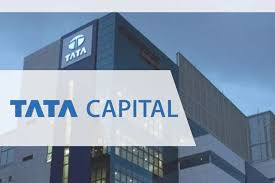15 Days Price Change
Summary
Tata Capital is preparing for its IPO and rights issue, aligning with RBI regulations and capital expansion plans. The IPO is expected to be ₹15,000 crore, making it one of Tata Group’s largest. While Tata Capital leads in market cap, its high debt-to-equity ratio (6.5 vs. industry 3.49) and lower ROE (13.53% vs. industry 15.29%) raise concerns. The P/E ratio of 108.78, significantly above the industry average of 10.92, suggests potential overvaluation. While long-term investors may benefit from its Tata Group backing, short-term investors should be cautious due to valuation and debt risks.

A significant NBFC within the Tata Group, Tata Capital, is preparing for its rights issue and initial public offering. It is poised to have a big impact on the financial markets because to its diverse financial portfolio and more than 700 branches.
Retail Finance: Home loans, personal loans, and auto loans.
Corporate Finance: Business loans, working capital, and project financing.
Wealth & Investment Services: Mutual funds, insurance, and portfolio management.
Infrastructure Finance: Financing for large-scale infrastructure projects.
Private Equity & Advisory Services: Strategic financial support for businesses.
Tata Capital's resiliency and development possibilities are enhanced by this diversified business model.
Being affiliated with the reputable and financially secure Tata Group is one of Tata Capital's main advantages. With a 92.83% ownership, Tata Sons guarantees strong financial support and bolsters investor confidence.
Upper Layer NBFCs are required to list by the RBI in order to improve transparency and governance. In addition to complying with these rules, Tata Capital's IPO offers a means of raising additional funds.
IPO approved in the General Meeting on 25th February 2025.
Expected IPO size: ₹15,000 crore, making it one of Tata Group’s biggest.
IPO dates and price band: Yet to be announced.
Issue size: ₹1,504 crore
Shares issued: 5.35 crore at ₹281 per share
Record date: 25th February 2025
Ratio: 1 share for every 70 held
Subscription window: 7th March to 16th March 2025
Tata Capital has witnessed impressive revenue growth but faces challenges in profitability and debt management.
| Metric | Q3 FY24 | Q3 FY25 | Growth |
|---|---|---|---|
| Revenue (₹ crores) | 4890 | 5945 | 21.57% |
| EBITDA (₹ crores) | 3833 | 4539 | 18.41% |
| EBITDA Margin (%) | 78.39 | 76.35 | -2.60% |
| PAT (₹ crores) | 1023 | 898 | -12.22% |
| PAT Margin (%) | 20.92 | 15.11 | -27.80% |
| EPS (₹)* | 2.32 | 2.46 | 6.03% |
| Debt to Equity Ratio | 5.91 | 6.49 | 9.81% |
| Gross NPA Ratio | 1.69 | 1.91 | 13.02% |
*not annualized
According to the financial data, revenue increased by a significant 117% between Q3 FY 24 and Q3 FY 25, while EBITDA increased by 218%. In spite of this, the PAT margin dropped and Profit After Tax (PAT) dropped 14.76%. While earnings per share (EPS) nearly tripled, the debt to equity ratio and the gross non-performing assets (NPA) ratio slightly increased, suggesting heightened credit risk and financial leverage. Although revenue growth is robust overall, the organization still needs to improve asset quality and profitability.
Tata Capital competes with major NBFCs like Aditya Birla Capital, L&T Finance, IIFL Finance, and Muthoot Finance. Below is a comparative analysis:
| Company | Market Cap (₹ crores) | ROE (%) | Debt to Equity | EPS (₹) | P/E |
| Aditya Birla Capital | 39,890 | 14.15 | 4.24 | 14.26 | 10.82 |
| Reliance Capital Ltd. | 312.1 | - | - | 21.38 | 0.58 |
| L&T Finance Ltd. | 34,410.71 | 10.31 | 3.5 | 10.28 | 13.45 |
| IIFL Finance Ltd | 12,341.17 | 17.84 | 3.31 | 12.84 | 11.56 |
| Muthoot Finance | 86,265.09 | 17.86 | 2.91 | 118.3 | 18.17 |
| Industry Average | - | 15.29 | 3.49 | 35.81 | 10.92 |
| Tata Capital | 361,922 | 13.53 | 6.5 | 8.6 | 108.78 |
Market Leadership: Tata Capital leads the industry with the largest market capitalization.
Profitability: The industry average of 15.29 percent is higher than Tata Capital's ROE of 13.53 percent.
Debt Levels: At 6.5, the debt-to-equity ratio is far higher than the 3.49 industry average.
Earnings Per Share: The industry average of 35.81 is significantly higher than the 9.79 EPS.
Valuation: Tata Capital may be overvalued, as evidenced by its P/E ratio of 108.78, which is significantly higher than the industry average of 10.92.
Long-term investors can benefit from Tata Capital’s growth potential and Tata Group’s backing.
Short-term investors should be cautious due to high valuations and increasing debt levels.
Tata Capital’s IPO and Rights Issue mark a significant milestone.Investors must carefully consider value, debt, and profitability patterns before making an investment, even when the company has solid fundamentals and a large market presence.
Sell or Purchase Share (Tentative Price)
| Company | Industry | Stock P/E | P/B | Company rating | MCAP (in Cr.) | Current Price |
|---|---|---|---|---|---|---|
| Pharmeasy | e-Commerce | -2.1 | 2 | 5302 | 8.3 | |
| Reliance Retail | Retailing | 141.5 | 23 | 698659 | 1400 | |
| Orbis Financial | Finance - Investment | 38.3 | 7.9 | 5417 | 445 |
How Your Money Can Grow With Us
